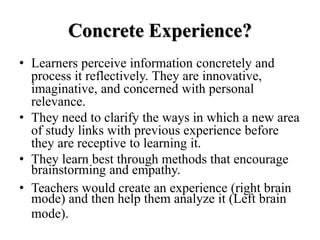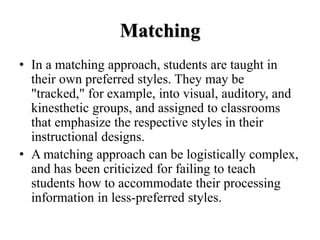This document discusses learning styles and their assessment in the classroom. It defines learning styles as cognitive, affective, and physiological traits that influence how students learn. There are five main approaches to conceptualizing learning styles: perceptual modality, information processing, Kolb's learning styles inventory, conceptual tempo, and affective orientations. The document also discusses three approaches to accommodating different learning styles in the classroom: matching, bridging, and style-flexing. Overall, the document provides an overview of learning styles theory and its applications for teachers.





















